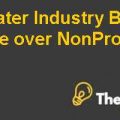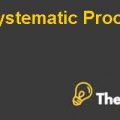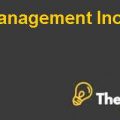
Aggregation of Risk to Measure the total risk exposure
Necessary information is provided through risk aggregation that allows the firm to perform effective enterprise-wide risk management. Due to aggregation of risk, the organization can make effective decisions regarding business decisions and business processes. Overall, not any single approach is appropriate for risk aggregation.
Risk aggregation framework is used to determine to some extent business practices, business processes, risk characteristics, and management process. Risk aggregation framework are developed and employed by financial firm for particular functions such as management function. This functions include risk identification and monitoring, solvency assessment, capital allocation and capital management etc. Aggregation of risk is required for each of these purposes, since different demands exist on risk aggregation method(Anon., 2010).
Some approach to adding up or aggregating measured risk must be incorporated by Risk-based regulatory framework.
Basel 11 capital framework
Bank’s overall minimum capital requirement are calculated i.e. total capital requirement for the credit risk, market risk and operational risk. While computing the capital requirement, diversification benefits between the three types of risks are not recognized by the firms.
For Risk aggregation with credit risk, the standard approach which is based on external rating and internal rating approach in both approach financial institutions make estimation of key risk parameters and assume that capital charges are portfolio invariant.
For market risk two methodologies are used by Basel II, the internal models approach and the standardized measurement method. Sum of the capital charges refers to minimum capital requirement for market risk, capital charges are calculated for each individual risk type such as equity risk, interest rate risk, foreign exchange risk and commodity risk (Anon., 2010).
The risk aggregation can be described as aggregation of total risk exposure of different kinds of risks which are associated with the organization. All risk are aggregated in order to measure the total exposure of the firm since each risk individually effects the organization.
Systematic risk is also known as aggregate risk, since it involves the industry risk. Systematic risk relates to the market returns, this risk can be attributed to broad factors. Sources of systematic risk includes macroeconomic factors, changes in interest rate by State Bank, fluctuation in currency rates, and recession etc. (Anon., n.d.).
Risk-adjusted return on capital
Banking is considered as very risky business. There are many internal and external factors that affects the amount of risk per activity. Due to this financial institution are becoming anxious about viewing risk across the entire franchise. Risk-adjusted return on capital is a very important performance measuring tool(Padganeh, n.d.).
It is an indicator for measuring efficiency in value creation as a function of risk. Risk adjusted return on capital is the measure of risk profile. In order to evaluate the projects which is having high risk element relative to capital required, this is commonly used(Anon., n.d.).
Value at risk
Value at risk shows the maximum loss that could occur in a specific period to the portfolio of investment. For example it allows manager to make statement that with 95% confidence level, $1 million loss could occur to the portfolio of investment in 1 month. On the other hand, there are 5% chance that this loss could exceed the $1 million.
The objective of the VAR was to make measurement of an active trading firm’s risk exposures systematic throughout its dealing portfolios. Firms in order to manage risk, choose approach either value risk and cash flow risk. A value at risk is concerned with the total entity’s value at a specific point in time(L.Culp, n.d.).
Value at risk could emerge as a single index of institutional risk. Value at risk is best for those organization for which value risk management is the goal. By facilitating with the measurement of risk across assets and activities, Value at risk enables the firm to report, monitor and control the risk in that manner that leads to efficiently risk control to desired and actual economic exposures. But at a time, Firm should not reliance on VAR since it causes severe problems if is not use appropriately.Financial Risk Management Case Solution
In order to manage risk by firm, VAR should be used carefully. Whenever an organization deliberately takes a specific risk as a part of its core business, VAR is very appropriate and best for managing and monitoring tools for those risks. (L.Culp, n.d.)..................
This is just a sample partial case solution. Please place the order on the website to order your own originally done case solution













